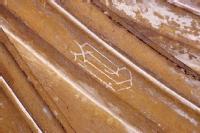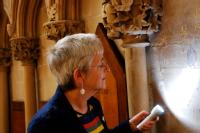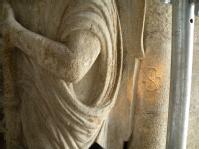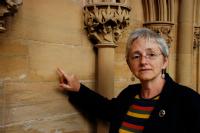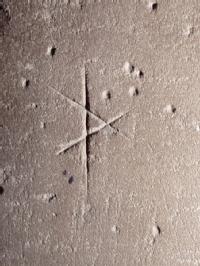Medieval masons could hold key to end Bank Holiday DIY misery
As the August bank holiday approaches, people across the UK will be gearing up to flock to stores to acquire flatpack furniture only to spend a frustrating afternoon trying to put it together. However researchers at the University of Warwick have found that a system devised by medieval masons could be key to solving that bank holiday furniture assembly misery.
Dr Jenny Alexander, from the University of Warwick's History of Art department, thinks that modern manufacturers should look to our medieval ancestors for a cheap and effective way of producing self assembly furniture.
Dr Alexander is an expert on Mason’s Marks, a medieval system of marking stone which has been used in the construction process for centuries. The marks are a sophisticated series of symbols that were used and understood even by illiterate builders and enabled instructions to be transferred between the designers and the constructors of buildings across the building world.
She said: “Masons’ assembly marks were used to show which piece of stone needed to go alongside another. It was a very simple system that has been replicated across the world for centuries. I think companies who manufacture flat-pack furniture could learn a lot from this system. If they used a system similar to Masons’ assembly marks to show which pieces went together, it could remove the need for the complex and often impenetrable instruction booklets they currently issue in many different languages.”
The system is universal and different versions of Masons’ Marks have been found in use at various sites across the world, over a 4,000 year period.
Dr Alexander said: “Each stonemason had his own mark when they were working on part of a specific project, and the mark would identify their work to make sure they got paid. While you can’t use the marks to trace itinerant masons from site to site, as there are too many co-incidences, you can use the marks to tell the story of the building in which they are found. Systems of marks of a related type are still used to identify the grade of stone in quarries today.”
The marks were also used to help assemble pieces if they had been carved and then transported to the site of construction.
Dr Alexander’s research is concerned with the architectural history of the great churches and cathedrals of the medieval period, and of the ways in which those buildings were constructed and used. She is interested in the ways in which the medieval and early-modern construction industry was organised, how masons were trained, how buildings were designed and how the materials used were chosen, supplied, and worked.
Dr Alexander is currently working on a book about Mason’s Marks which is due to be published in 2012, and has just gained funding to look at Mason’s Marks in Santiago de Compostela cathedral in Spain.
Notes to editors
Photographs of Dr Alexander are available here:
http://www2.warwick.ac.uk/services/communications/medialibrary/images/july2010/jennya3.jpg
http://www2.warwick.ac.uk/services/communications/medialibrary/images/july2010/jenny_a1.jpg
Photographs of examples of Mason’s Marks are available here:
http://www2.warwick.ac.uk/services/communications/medialibrary/images/july2010/masons1.jpg
http://www2.warwick.ac.uk/services/communications/medialibrary/images/july2010/masons2.jpg
Please contact Kelly Parkes-Harrison, Communications Manager, University of Warwick, k.e.parkes@warwick.ac.uk, 02476 150483, 07824 540863.

